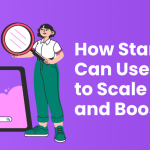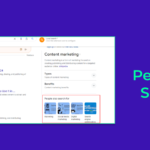LinkedIn vs. Twitter: Which Platform Drives More Engagement And Traffic For Content Promotion?
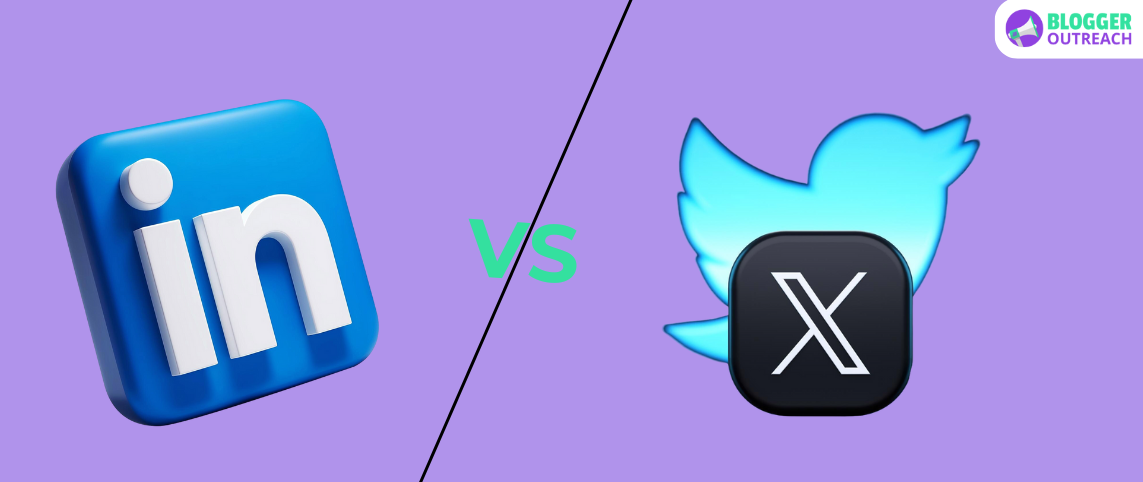
Table Of Content
Both Twitter and LinkedIn are great for building brand awareness and engagement with a specific target audience.
According to Statista, 86% of marketers use Social media for marketing. Platforms like LinkedIn and Twitter have been go-to platforms for engaging with, communicating with, and attending to customers.
However, there’s always a battle between LinkedIn and Twitter, where many claim that either is a great platform for marketing.
So, should you think of a LinkedIn marketing strategy or go for a Twitter campaign instead? If you’re wondering which platform is best for content promotion, this blog post should help.
In this article, we have discussed how important each platform is for marketing. Read on for more comprehensive insights.
Twitter & LinkedIn: Understanding Both Platforms
Social media platforms provide marketers, brands, agencies, and creators with an immense opportunity to promote their content.
But the saturated landscape of a growing number of social media platforms often works against the right promotion strategy. At this point, the best course of action is to choose the social media platform that suits a brand/marketer and aligns with their target audience.
Twitter and LinkedIn — Both social media platforms are great for content promotion. The key distinction between Twitter and LinkedIn lies in the approach. Twitter is more personal, while LinkedIn appears to be professional.
A marketer’s best decision for content promotion isn’t to choose one over the other. Instead, it’s about choosing the right platform for the right purpose. That’s why we recommend understanding how Twitter and LinkedIn work.
X/Twitter
Twitter stands out in a few key areas. It’s faster and allows content creators and marketers to quickly reach their target audiences.
(i) Nature Of The Platform
It’s a huge platform that provides access to celebrities, industry leaders, entrepreneurs, and bigger organizations.
Here, the users interact with each other through tweets — short written texts of 280 characters — and use them for posting, commenting, and replying on the platform.
(ii) Audience & User Demographics
As a social media platform, X depends mostly on real-time interactions. 34.2% of the platform’s users are in the 18-24 age group, which makes Twitter the most suitable platform for marketing to a younger demographic.
(iii) Types Of Content To Promote
Most content on X includes news updates, viral stories, polls, quick thoughts, and engaging visuals. Quicksprouts research shows that users on Twitter post 361% more images than videos.
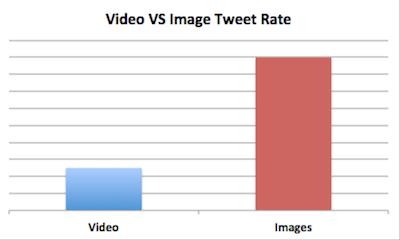
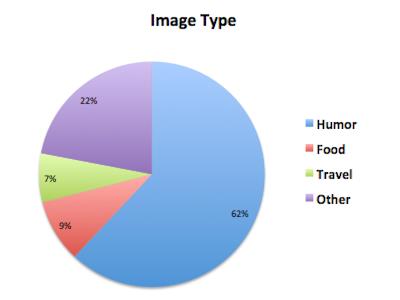
What’s more, text performs way better than images. Quotes outperform questions on Twitter. And it’s not a platform predominantly used for sharing memes like you do on Facebook or Reddit.
(iv) Engagement Metrics
| Likes | Retweets | Replies | Mentions |
Sprout Social data suggests that tweets with photos get 150% more retweets. As a marketer or a creator, it’s critical to know about the engagement metrics of Twitter as a platform.
LinkedIn is a social networking platform for working professionals, brands, agencies, and institutions. Most B2B brands choose to run content marketing on LinkedIn to gain the highest amount of visibility.
(i) Nature Of The Platform
On LinkedIn, creators share their work, experiences, skills, and professional achievements.
It’s also a platform for Brands and companies to show their cultural values, achievements, and social contributions.
(ii) Audience & User Demographics
LinkedIn has an audience from the older demographic, with most users aged between 30 and 49 years.
It’s a platform with 1.1 billion global users, as per Cognism, with the majority of the audience coming from the USA. It’s a platform where B2B communications and interactions thrive faster.
(iii) Types Of Content To Promote
LinkedIn, as a social networking platform, is all about building credibility, showing expertise, and sharing knowledge. It’s a great place to share knowledge in the form of how-to guides, industry analysis, videos, tips, success stories, and professional tips.
Brands, marketers, and individuals can sell insights, case studies, long-form articles, and professional achievements through LinkedIn.
LinkedIn is a platform for building a brand and a network. So, overselling through your content doesn’t help much. You can use relevant images to boost your overall reach. It’s best not to make every post about selling a specific product.
(iv) Engagement Metrics
LinkedIn also has its own engagement metrics, which are very similar to those of Twitter. Following are the engagement metrics of LinkedIn –
| Clicks | Likes/Reactions | Comments | Shares | Impressions |
The best way to build a network on LinkedIn is through commenting on other people’s posts, sharing opinions, following others, and accepting follow-up requests. Creating different types of content and posting them on LinkedIn also helps build authority and helps with content promotion.
Twitter vs LinkedIn – Which Is Better For Content Promotion?
Both Twitter and LinkedIn have their specific qualities. To build a better social media presence as a brand or a person, it’s important to choose the right platform instead of fighting over which one is better.
We have evaluated both platforms based on different parameters and provided insights about which one will be a better platform for promoting content.
1. Speed
Twitter is a great platform for building up a business’s social media presence. In 2025, most brands and businesses are using Twitter or X to build their brand presence and attract an audience.
It’s difficult for brands to get their target audience to notice them on social media. It requires strong social media messaging and marketing tactics to nurture and engage with audiences on any social media platform — the same goes with Twitter.
Twitter demands frequency. To promote content on Twitter, creators must post multiple times a day. It’s the best way to keep the users engaged on the social media platforms as well.
Twitter data can also help with a stronger understanding of past content marketing initiatives. It’s also a good way to plan a better and more effective marketing strategy. Creators can use Twitter to get more website traffic or traffic to a blog.
As a brand, if you’re looking for potential customers, then Twitter is also a good platform to try.
2. Target Audience
Twitter works for any brand trying to set up a social media presence. However, B2B companies need a more formal approach and proper audience targeting. That’s where LinkedIn surpasses Twitter through its approach to B2B businesses.
LinkedIn is a better platform for professional focus and helps convert more B2B clients. On the contrary, B2C companies or brands looking to engage with younger target audiences or people who prefer real-time interaction would go for Twitter.
It’s critical to find the right target audience for effective content promotion. As a brand or a marketer, it’s critical to understand the audience behavior on every platform and think about whether it suits your brand’s needs for engagement.
If your brand is all about shorter content, digestible updates, quick gossip, and byte-sized stories, Twitter is the way to go. On the other hand, brands with a serious and strong reputation would benefit from LinkedIn.
LinkedIn audiences spend more time on longer-sized content, carousels, case studies and research in the form of PDFs.
For effective content promotion, it’s important to first understand your brand’s values and audience behavior on a particular platform.
3. Content Types And Formats
Marketers and brands must also know about the effectiveness of content types on both platforms for successful promotion.
(i) Effective Content On Twitter
If you make Twitter a part of your content strategy, your content has to be concise and impactful. As a creator, you’ll have to utilize hashtags and receive 33% more engagement.
You can also depend on visual content like images, GIFs, and short videos. Twitter demands more visual elements for your content to perform better on the platform.
(ii) Effective Content On LinkedIn
LinkedIn is a platform where long and in-depth content performs the best. Most creators are posting thought leadership pieces, case studies, and professional insights to resonate with the target audience on the platform. Also, LinkedIn content that includes a link or any resources to educational material gets more impressions and engagement.
4. Algorithm And Visibility
The algorithm of Twitter prioritizes engagement. The tweets that result in immediate interactions will appear on the feeds of a follower. That’s why it’s better to time-track posting schedules and post more frequently to succeed on Twitter.
LinkedIn’s algorithm, on the other hand, focuses on professional relevance and network connections.
Users are likely to see posts that are getting more comments and likes. That’s why engaging in others’ posts can also let users grow and get noticed on LinkedIn.
Verdict
Instead of battling over which one is the best platform for content promotion or marketing, it’s important to leverage the power of both. As a content creator, both Twitter and LinkedIn have opportunities you can take to reach a specific target audience. The right practice lies in understanding the relevancy between the audience and your purpose for promoting on a specific channel.
However, if we want to come to a simpler conclusion, Twitter provides better opportunities for B2C, while LinkedIn is more of a B2B-prone social media platform.

